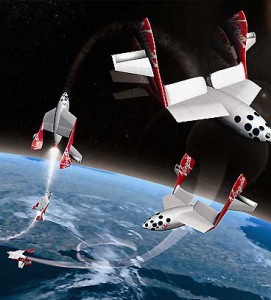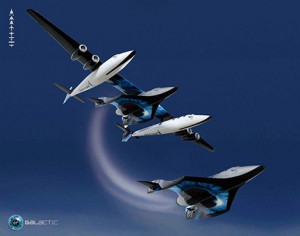Excellent stuff, this, and a fitting way of both apologising for my recent absence, and attempting to be sufficiently interesting to lure my readers (who have no doubt wandered) back to the fold.

The topic of today’s post? Why space tourism and insurance, of course!
Perhaps it’s just me, but space insurance wasn’t something to which I’d ever given any thought. Upon finding out that other people have, and serious thought at that, I thought I’d share.
To begin, then: why was this paper written at all? Well, it says (fairly, I think) that space travel and tourism are both quite risky for humans and tech alike, particularly at these early stages. And risk = insurance. Of course, no one’s really looked into the issue of space insurance per se, (silly us, we’ve been getting stuck up in the tech and politics of it), and hence said paper. Indeed, the opening line reads:
‘Amateurs talk propellant, professionals talk insurance’. These were the words of Pete Bahn, Founder of TGV rockets at the Space Access ‘07 Conference in Phoenix.
Further, it explains that 2009 and 2010 are, apparently, being seen as bridge years towards the upcoming commercial space flights, with Virgin Galactic‘s* first flight scheduled for sometime in the next year or so. As a result, this is of course the perfect time for anyone interested in making huge amounts of moolah (while of course providing a valuable service) to get involved and to start figuring out how best to do so. The author maintains that:
The creation of a viable and affordable insurance regime for future space tourists would be a critical element in the development of the overall space tourism market.
So, what’s the next step? To identify the risks, of course, some of which are summarised below.
Risk identification
Spaceflight is risky. Calls to Houston regarding problems are made. Craft explode. People expire. This will likely continue to happen.
The death rate of spaceflight is, according to NASA, some 4%. A 1 in 25 chance. That’s actually quite alarmingly high, considering heart disease kills 1 in 6 or so**, and strokes 1 in 28. Of course, I’d like to suggest that to extrapolate this figure would be absurd - the sample size is tiny, and we haven’t exactly done a lot of it yet. Nonetheless, entry/re-entry, radiation, tiny bits of hurtlingly-fast rock etc DO make it a bit more dangerous than, say, your average pastoral landscape (except for the rabid sheep, of course).
So, it’s going to be necessary to find insurance methods both for damaged craft, and for damaged people. Damaged craft first:
One of the first things to work out is the official definition of space, in terms of defining where is atmosphere, and where is space. I had assumed there would be consensus on this. There is not. The most generally used definition, though, is that space begins at the Karman line, some 100km or so above the earth’s surface.

Then there are the craft themselves. Currently built to look quite a lot like business jets, a lot of thought and design needs to go into how to design them so as to survive multiple entry/re-entry events, the various other vagaries of space, NOT explode due to their sitting on large amounts of extremely explosive fuel, and how best to certify and license them. The author suggests a rigid certification scheme would likely be more appropriate. I agree.
And then, damaged people. There’s the effect of space flight on people themselves. Psychological. Emotional. Physiological. Etc. And what if someone does actually get hurt? Currently, the only people who can afford this sort of fun own some of the most valuable arses on earth, so (while the paper doesn’t mention it) I imagine the insurance premiums would be astronomical.*** There would be the potential human capital loss as well…
We’ve identified the risks, what now?
What do they suggest be done? Due to the very new, and complicated nature of space insurance, the author suggests that each case be evaluated separately, rather than using the aviation insurance industry as a model. Of course, once things become a little more routine in terms of craft reliability and design, flight frequency etc, then perhaps an overarching framework could be considered. He reckons some 5 - 15 accident-free flights would be necessary for underwriters to begin working out the crafts’ reliability and coming up with pricing models.
There’s an awful lot more in the paper itself, in which detail-oriented people can frolick. But to end off, I’m going to quote the author:
It is a matter of when,not if!
Also, I think the author deserves either a smack, or a thumbs-up, for the use of the phrase “The final underwriting frontier’ as a subheading.
The jury’s still out on commercial spaceflight - is it a silly waste of money for the very bored and wealthy, or does it herald the beginning of humanity’s move off earth? Time will tell. And apparently, so will insurance.
References:
Bensoussan, D. (2010). Space tourism risks: A space insurance perspective Acta Astronautica, 66 (11-12), 1633-1638 DOI: 10.1016/j.actaastro.2010.01.009
————————
*For anyone who may have spent time in a cave the last few years, yes, commercial space tourism is here. And you too could be a part of it! Simply gather together 200,000 of your favourite US dollars, give them to VG, and see the earth as only, well, many of us have seen it, except in real life. Note: at this point, all flights are suborbital.
** If you’re interested in comparing, this is fun. It’s a death calculator! It only uses publicly available data from Europe and the US, of course, but still. Fun! Although they could definitely work on the presentation of the site/data a bit…
*** Yes, you read that right. And it was intentional.
Pingback: Tweets that mention All passengers: please remember your space insurance | misc.ience -- Topsy.com()